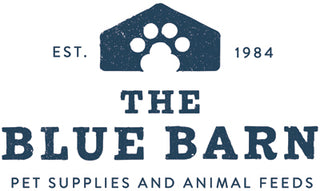
Pond Advice
Aquarium Setup
When setting up your new tank it is important to make sure that the tanks weight when filled can be supported, and you have a nearby power point to support lights, filters etc.
Equipment
- Aquarium
- Aquarium gravel
- Aquarium filter/vacuum
- Replacement filter media
- Heater/ lights
- Decorations (plants)
- Aquarium test kits
- Fish food
- Fish net
- Bucket
Food Type
Much like any other pet, it's important to make sure you feed your fish a balanced diet. Different species will have different requirements and prefer different types of food. This can be available as;
- Fish Flakes
- Fish Pellets
- Frozen Food (krill/plankton)
- Dried food (algae/seaweed)
Normally, you should only need to feed your fish once a day, making sure there's none leftover after a minute or so of giving it to them. Otherwise, the water can carry a higher level of unnecessary waste which will reduce the water quality.
Nutrition
The right nutrition can be tricky to get right as the vast majority of aquariums contain a diverse group of fish. Nutrients essential to fish are the same as those required by most other animals, including proteins, lipids, carbohydrates, vitamins & minerals. Fish are especially adept at converting protein from their diet into body tissue, which is why fish need significantly less food and calories than warm-blooded animals. Fish are poikilothermic (cold blooded) and do not use energy to maintain their body temperature.
Fish also have a swim bladder allowing them to be buoyant in the water, further reducing energy requirements. It is important to feed fish according to their nutritional requirements, taking into account species, life stage, energy requirements, composition of diet and environmental factors. i.e. a fish’s metabolism will speed up with increased water temperature which can lead to malnutrition. A higher quality diet is more likely to provide essential nutrients from smaller portion sizes.
Environment & Filtration
As well as checking that the fish keeper is offering the correct nutrition, it is also very important to research the type of water quality the fish need, their optimum habitat and how big they are going to grow. All tanks need a filter, to help prevent ammonia poisoning, breakdown waste and oxygenate the water. A filter will also aid in the prevention of disease.
Fish Disease
Maintaining excellent water quality is the best protection for fish. In addition, feeding a high quality food will help maintain health and can boost vitality. The difficulty with diagnosing fish disease is that often, no matter what the problem is, the same symptoms can be seen. The best way to prevent disease within an aquarium is to ensure that the water quality is correct for the fish housed within it. Stress caused by poor water quality is the biggest killer of captive fish.
Common fish diseases are;
- Swimbladder
- White Spot
- Fin, Tail & Mouth Rot
- Ulcers
- Gill Flukes
- Constipation
- Slime Disease
- Fungus
Water Quality
Captive fish live in a completely closed environment; they are entirely dependent on their surrounding water. Aquarium water provides fish with food, medication, heat and oxygen. The key to a healthy aquarium is down to maintaining good water quality that is suited to the species that are living within it. Poor water quality causes fish to become very stressed, thereby increasing risk of disease and infection from parasites. They can stop eating, lose their colouring and generally lack condition and in certain cases can cause death. Factors which can cause water quality to deteriorate include maintenance of tank, inadequate filtration, over-feeding and over stocking. An inadequate filter system that is unable to cope with high wastage will also lead to higher levels of ammonia and nitrite which can in turn poison and kill fish.
The Nitrogen Cycle
To keep a successful aquarium, the aim is to establish a colony of beneficial bacteria within the filter which convert ammonia to nitrites, and then nitrites to nitrates, which are then easily removed by water changes and absorbed by plants.
The Nitrogen Cycle explained below shows how toxins are removed from the aquarium:
- Fish waste and uneaten food are broken down into ammonia and then to nitrite.
- Nitrite is then “digested” by bacteria in the filter.
- The nitrifying bacteria oxidise ammonia and nitrite into less harmful nitrate.
- Some of this nitrate is absorbed by plants and removed during water changes.
High levels of ammonia and nitrites within an aquarium are toxic to aquatic life.
Remember never to change 100% of the aquarium water; this will remove the beneficial bacteria and stress the fish.
